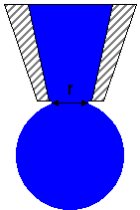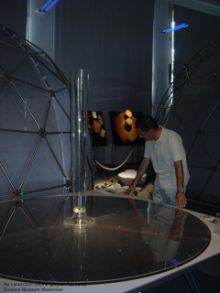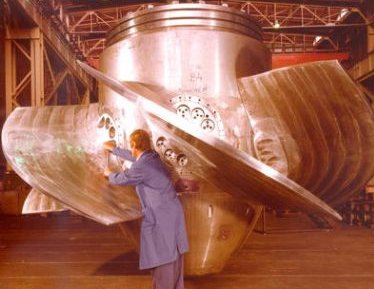
The Water Turbine

Making the turbine work in a clock-like manner is not so easy. The capillaries, through which the liquid flows must be thoroughly chosen. Their size is such that the liquid drops squeeze under their proper weight and pass through the capillary holes. The condition for overcoming the surface tension in the liquid can be formulated in the following form:
in which r is the capillary diameter and s is surface tension. On the other hand, the capillaries have to be suitably narrow, so that the liquid will flow in drops.
Generally, the above condition is valid also for substances sealed in the water clock, as air.

The analysis is somewhat more difficult when the other substance is a lighter liquid, which does not mix with the heavier one. The lighter liquid has to be pressed through the other capillary. In other words, the displacement force applied to a drop of a lighter liquid has to be at least equal to the weight of a drop: m'g (prim denotes the values concerning the lighter liquid) and to the force of surface tension for this liquid 2pr's'.
V' denotes the volume of a displaced drop and ris the density of the heavier liquid.

In fact, falling down of heavier drops forces the lighter ones up. The potential energy of the heavier liquid in relation to the potential energy of a lighter one is transformed into kinetic energy of drops which power the turbine as in a real hydroelectrical power station.
